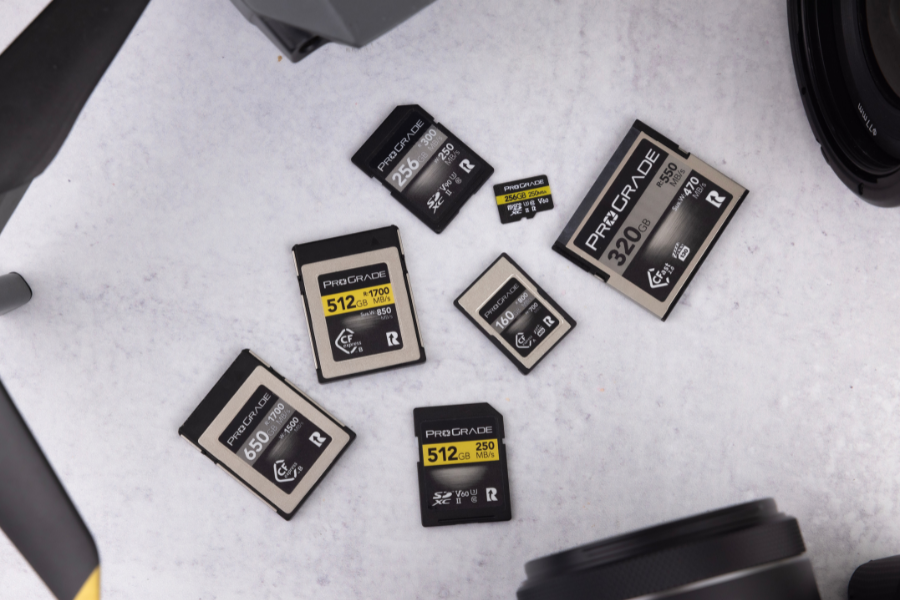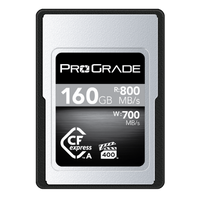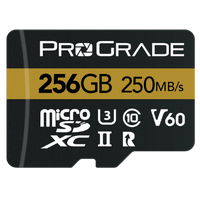In the fast-paced world of videography, where every frame counts, one crucial element often goes unnoticed—the memory card. Yes, that tiny, unassuming piece of technology holds the key to capturing your 4K masterpieces in all their breathtaking glory. So, buckle up as we embark on a comprehensive journey to discover the perfect memory card for your 4K video recording needs and unlock a world of seamless recording, uninterrupted creativity, and awe-inspiring footage. Ready? Let’s dive in!
Key Features to Consider When Choosing a Memory Card for 4K Video
When it comes to capturing the stunning detail and cinematic beauty of 4K video, choosing the right memory card is paramount. To ensure your footage flows seamlessly and your creativity knows no bounds, consider the following key features when selecting your memory card:
1. Compatibility: Finding the Perfect Match for Your Camera
First and foremost, not all memory cards are created equal regarding compatibility with different cameras. Before anything else, check your camera’s specifications and ensure that the memory card you choose is compatible with your specific model. Pay attention to factors like card format (SD, microSD, CFast, etc.), card speed class, and any particular requirements the camera manufacturer mentions. Additionally, you can use our comprehensive compatibility charts and data sheets to see which cards are compatible with your camera and support the highest resolution video capture.
2. Video Performance: Sustaining the Flow of Cinematic Brilliance
When you shoot Full HD, you can almost always get away with just checking what type (form factor) memory card fits in your camera, pop one in, and shoot away. However, those shooting in 4K must know a little more about memory cards.
Different video formats have different data rates. The higher the resolution and color profile, the higher the data rate and the more information your camera demands from your memory card to save every second. Your camera may be SD card compatible, but this does not mean you can shoot 4K video to every SD card out there.
Let’s use Sony Alpha 7S III digital camera as an example. Take a look at the table below. You’ll see that an SDHC (Secure Digital High Capacity) memory card with a U3 speed rating will do just fine shooting Full HD video with standard format and compression. But when you switch to 4K, an SDHC will no longer cut it, and you will need an SDXC (Secure Digital Extended Capacity) memory card with at least a V60 speed rating. However, even that falls short when you need to shoot with All-Intra compression, where each frame is captured ‘whole’. Shooting All-Intra only becomes available if you use an SD card with a V90 speed rating or opt for the next-generation CFexpress Type A memory cards with lightning-fast write speeds of around 700MB/s.

So, when choosing a memory card for shooting 4K video, don’t pick just any compatible card (whatever fit’s in the slot of your camera) but make sure the card can record the exact format you want to shoot. Otherwise, you will severely limit yourself.
To truly harness the potential of 4K video, seek memory cards designed for sustained video performance. These cards are specifically optimized to handle continuous recording without drops in frame rate or loss of quality. When choosing an SD card or microSD card, look for cards with UHS-II bus and V60 (Video Speed Class 60) rating or V90 (Video Speed Class 90) rating, indicating their ability to sustain at least 60MB/s and 90MB/s write rate for extended durations. Regarding CFast or CFexpress cards, look for the Video Performance Guarantee rating on the label. Indicating again the minimum sustained write speed.

As mentioned earlier, our compatibility charts will help you differentiate between compatible and recommended memory cards for your camera.
3. Write Speed: A Dance of Data in Real-Time
Writing 4K video data requires a memory card that can keep up with the demands of high-resolution recording. Besides paying extra attention to the Video Speed Class rating, pay attention to write speeds as well. V90 rating guarantees a minimum write speed of 90 MB/s, but it is by no means an indicator of the card’s actual performance. Look for memory cards with fast write speeds, as they ensure a smooth data flow, minimizing the risk of dropped frames and allowing you to capture every scene without compromise. The higher the ceiling (the difference between the max write speed of the card and the required minimum write speed of the camera), the safer your data is.
4. Read Speed: Unlocking the Power of Post-Production
While write speed is crucial during recording, read speed plays a vital role during post-production. A memory card with a fast read speed allows for swift transfer of files to your computer or editing device, saving you valuable time and ensuring a seamless editing experience. So, for efficient transfer of large 4K video files and smoother workflow, go with memory cards with high read speeds. Preferably starting at 250MB/s.
5. Storage Capacity: A Digital Canvas Without Boundaries
In the realm of 4K video, storage capacity is your canvas for creative expression. The larger the storage capacity, the longer you can record without worrying about running out of space. With over 8 million pixel values to capture for every frame, 4K video requires considerably more storage space than Full HD, allowing you to capture uninterrupted moments of visual brilliance.
That said, no universally ideal capacity for shooting 4K video exists. Instead, it comes down to your specific needs and workflow.
When determining the right capacity for your needs, consider the length of your typical video shoots, the frequency of shooting, and the availability of backup options.
If you often capture lengthy footage or engage in extended filming sessions, opt for higher-capacity memory cards, such as 256GB or 512GB, to provide ample room for your recordings. On the other hand, if you frequently shoot shorter clips or have the opportunity to offload footage during breaks, a 64GB or 128GB memory card might suffice.
Remember to factor in any backup strategies you employ, such as offloading files to external storage devices or using multiple memory cards, to ensure a smooth workflow and avoid the risk of losing precious footage. Assess your shooting habits and requirements to determine the ideal memory card capacity for your specific videography needs.
Just keep in mind that not every 4K video requires an equal amount of storage space. For example, a 60-second 4K video shot at 24 frames per second with Long GOP compression, 4:2:0 10bit color, and XAVC HS codec takes only about 225MB of memory card space. Meanwhile, a 60-second 4K video shot at 60 frames per second with XAVC S-I codec, 4:2:2 10bit color, and All-Intra compression requires a whopping 4.5GB of storage space. That means a 64GB memory card can fit only about 14 minutes of video like that.
So, when trying to anticipate the necessary memory card capacity for shooting 4K video, don’t just multiply the file sizes of your Full HD footage by four. It may seem logical, but that’s not how it works. Instead, to be on the safe side, take your time and crunch the numbers. We created an easy-to-use formula for quickly estimating video file sizes, that way, you know exactly what capacity memory card is right for your upcoming 4K shoots.
6. Durability and Reliability: Your Creative Companion in Any Environment
As a videographer, your adventures can take you to challenging environments. Therefore, your memory card should be a steadfast companion, capable of withstanding the rigors of your creative pursuits. Choose memory cards that are durable, shockproof, and temperature resistant, ensuring reliable performance even in harsh conditions. Robust construction ensures that your memory card remains reliable, even in extreme conditions, safeguarding your valuable 4K footage.
Furthermore, consider memory cards that come with built-in error correction and wear-leveling technologies. These features enhance the card’s reliability by detecting and correcting errors on-the-fly and evenly distributing data writes across the card’s memory cells, reducing the risk of data loss and extending the card’s lifespan.
By prioritizing durability and reliability in your choice of memory cards for 4K video recording, you can confidently capture your cinematic masterpieces without worrying about card failures or loss of precious footage. Invest in high-quality cards that are purpose-built for the demands of 4K video, and enjoy a seamless recording experience that matches the exceptional quality of your visual creations.
7. Backup and Maintenance Options: Protecting Your Precious Footage
When shooting 4K video, the risk of fragmented cards can compromise sustained write speeds. To safeguard your footage, it’s advantageous to select memory cards that come with dedicated maintenance software and data recovery tools. These features enable you to perform regular card maintenance, optimize performance, and recover data in case of unexpected issues. Choosing memory cards with robust backup and maintenance options provides peace of mind and helps maintain the longevity of your valuable video content.
For example, all ProGrade Digital memory cards are compatible with Recovery Pro data recovery software. This comprehensive tool is familiar with all the codecs used by popular video cameras and gets updated as soon as new codecs emerge. You don’t have to buy this software beforehand. It is available for you just in case something happens. Better yet, you can download a free evaluation copy to see if your files can be recovered before you sign up for the annual license.
Similarly, ProGrade Digital memory cards with the “R” marking on the label are all Refresh Pro compatible. This unique memory card maintenance software allows you to defragment and reformat your memory cards to a factory-new state, ensuring continuous peak performance. Additionally, you can use this tool to check the underlying health of your memory cards. This gives you peace of mind before going out on an important shoot.
Final Thoughts on Choosing the Best Memory Card for 4K Video Recording
To unleash the full potential of 4K video recording, you must equip yourself with the tools YOU need. Remember, your needs may differ entirely from fellow 4K videographers. By considering essential features such as storage capacity, write and read speeds, video performance, compatibility, and durability, you can ensure a seamless and uninterrupted recording experience. Additionally, don’t forget to prioritize backup and maintenance options to safeguard your valuable content.
Remember, investing in reputable brands and purpose-built memory cards tailored for 4K video ensures robust performance and longevity. So, equip yourself with the right memory card, unleash your creative potential, and capture breathtaking 4K videos that will leave a lasting impression on your audience. Happy recording!





